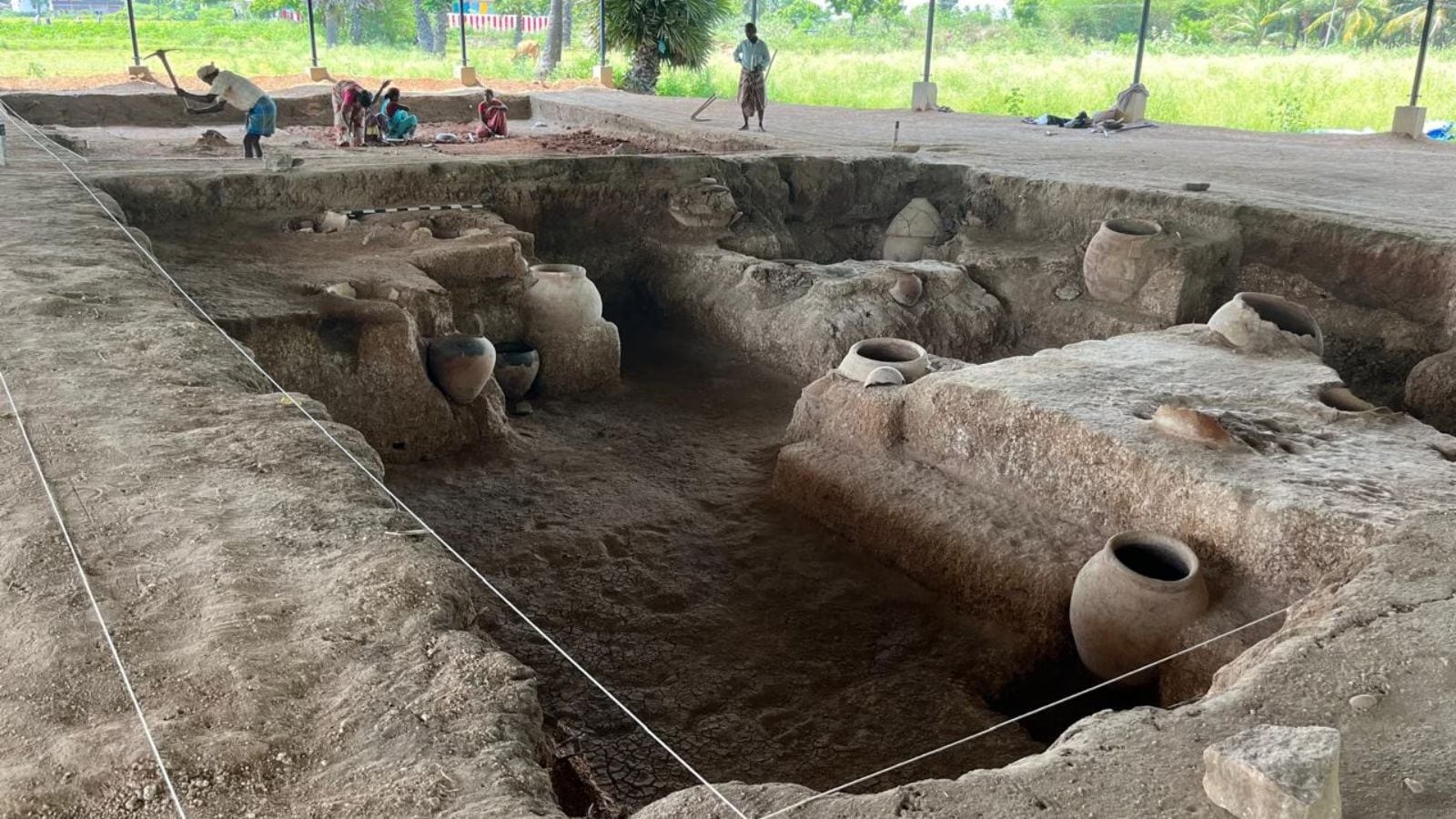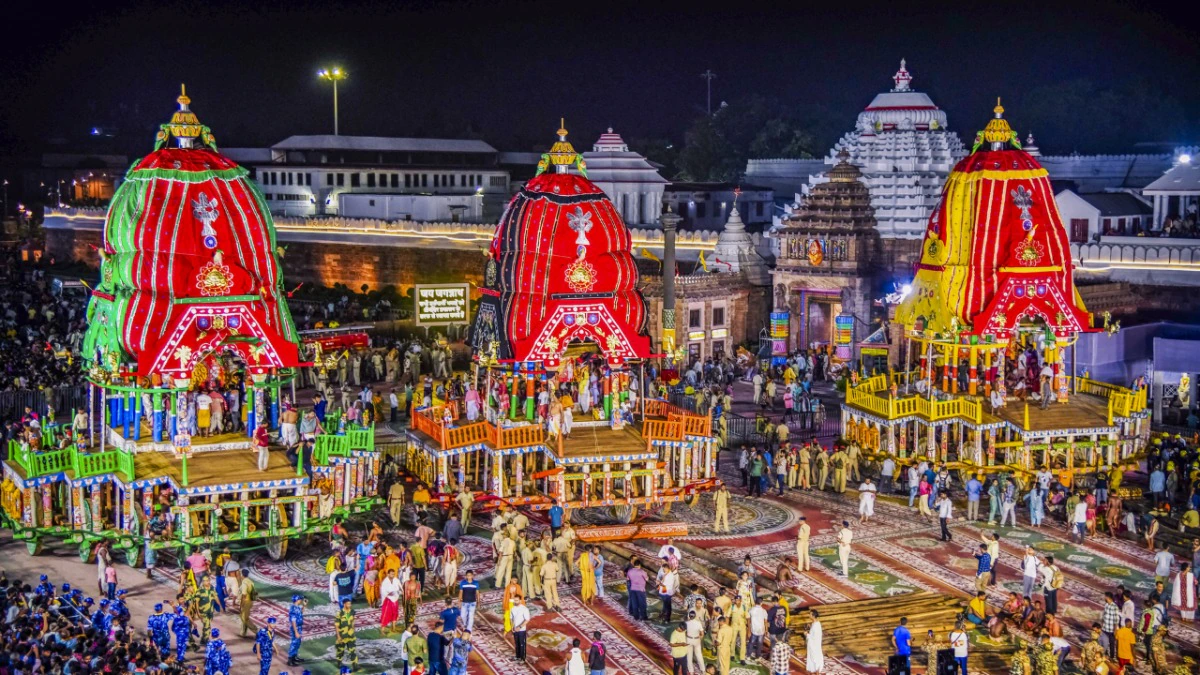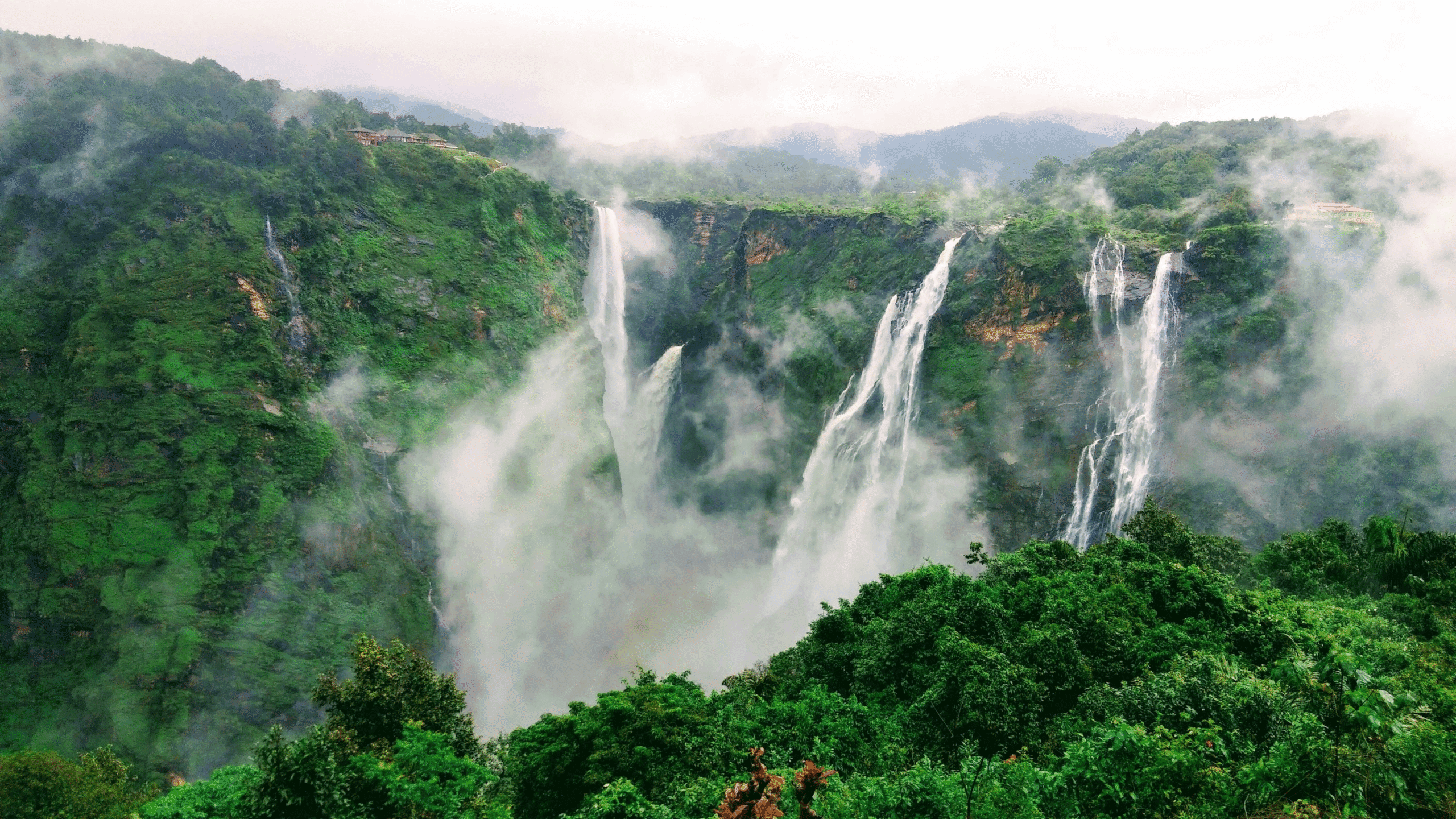What began as an archaeological dig near the Vaigai River has evolved into one of modern India’s most controversial debates. The Keeladi excavation, ongoing since 2015, has unearthed a sprawling ancient urban settlement with implications that could rewrite South Indian — and possibly Indian — history. But it’s also become a flashpoint in the ideological tug-of-war between Tamil Nadu and the Union Government.
🧱 Archaeological Goldmine: What Keeladi Has Revealed
Over the course of a decade, Keeladi has yielded more than 18,000 artifacts:
- Urban infrastructure: Brick homes, drainage systems, ring wells, and what appears to be industrial workshops.
- Dating back to ~580 BCE: Radiocarbon dating has confirmed that the Sangam-era settlement may predate early North Indian urban sites, shaking long-held historical assumptions.
- Tamil-Brahmi inscriptions: Over 120 potsherds with names etched after firing, suggesting widespread literacy among ordinary citizens, not just elite scribes.
- Trade & culture: Agate beads from Gujarat, gamesmen, terracotta dice, and even hopscotch patterns show a lifestyle rich in trade, play, and craftsmanship.
- Ethnographic studies: 3D reconstruction of Keeladi-era skulls reveal predominantly South Indian features with genetic traces of West Eurasian and Austro-Asiatic groups, challenging isolationist cultural narratives.
Perhaps most tantalizingly, some symbols found resemble Indus Valley markings, raising questions about possible continuity — or at least cultural echoes—across a millennium-wide gap.
⚔️ The Politics of Potsherds: Tamil Pride vs Central Authority
The discoveries have struck a political nerve, especially between the DMK-led Tamil Nadu government and the BJP-led Union Government.
🎓 Revisionist History or Scientific Progress?
The Tamil Nadu State Department of Archaeology (TNSDA) claims that the Keeladi findings push back Tamil civilization’s antiquity, challenging the dominant Indo-Aryan–centered historical narrative.
But the Archaeological Survey of India (ASI) and the Union Ministry of Culture have taken a more cautious stance. Their skepticism has culminated in a request for lead archaeologist K. Amarnath Ramakrishna to revise his 982-page report, citing “lack of scientific rigor.” Ramakrishna, now removed from the project, called the request “immoral” and “politically motivated.”
🏛️ Tamil Identity at Stake
For the DMK and many in Tamil Nadu, Keeladi is more than an excavation — it’s an emblem of Tamil pride. CM M.K. Stalin has publicly supported the state-led research and condemned what he calls “cultural suppression” by the Centre.
Meanwhile, Union officials insist that Keeladi must “stand up to international archaeological standards”, framing the debate as a matter of scientific discipline, not regional suppression.
🌍 A Deeper Cultural Divide?
At its core, Keeladi reflects a North-South civilizational rift in how Indian history is understood and taught. The Sangam Age, long celebrated in Tamil literature, is finally receiving physical corroboration. But who controls the narrative? That’s the question now inflaming India’s political and academic circles.
The debate over India’s civilizational origin story is no longer confined to ancient texts — it’s now being fought over every potsherd, brick wall, and burial site unearthed along the Vaigai River.
Discover more from SparkMantis
Subscribe to get the latest posts sent to your email.



